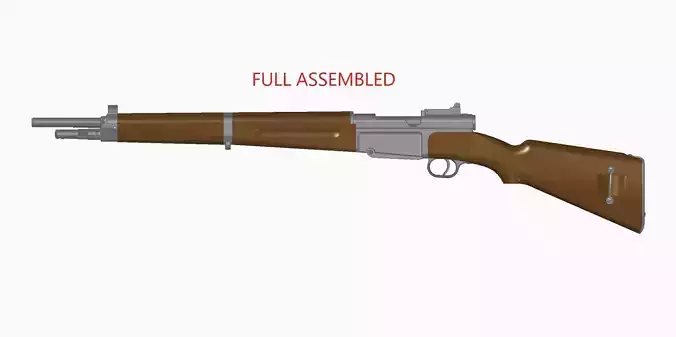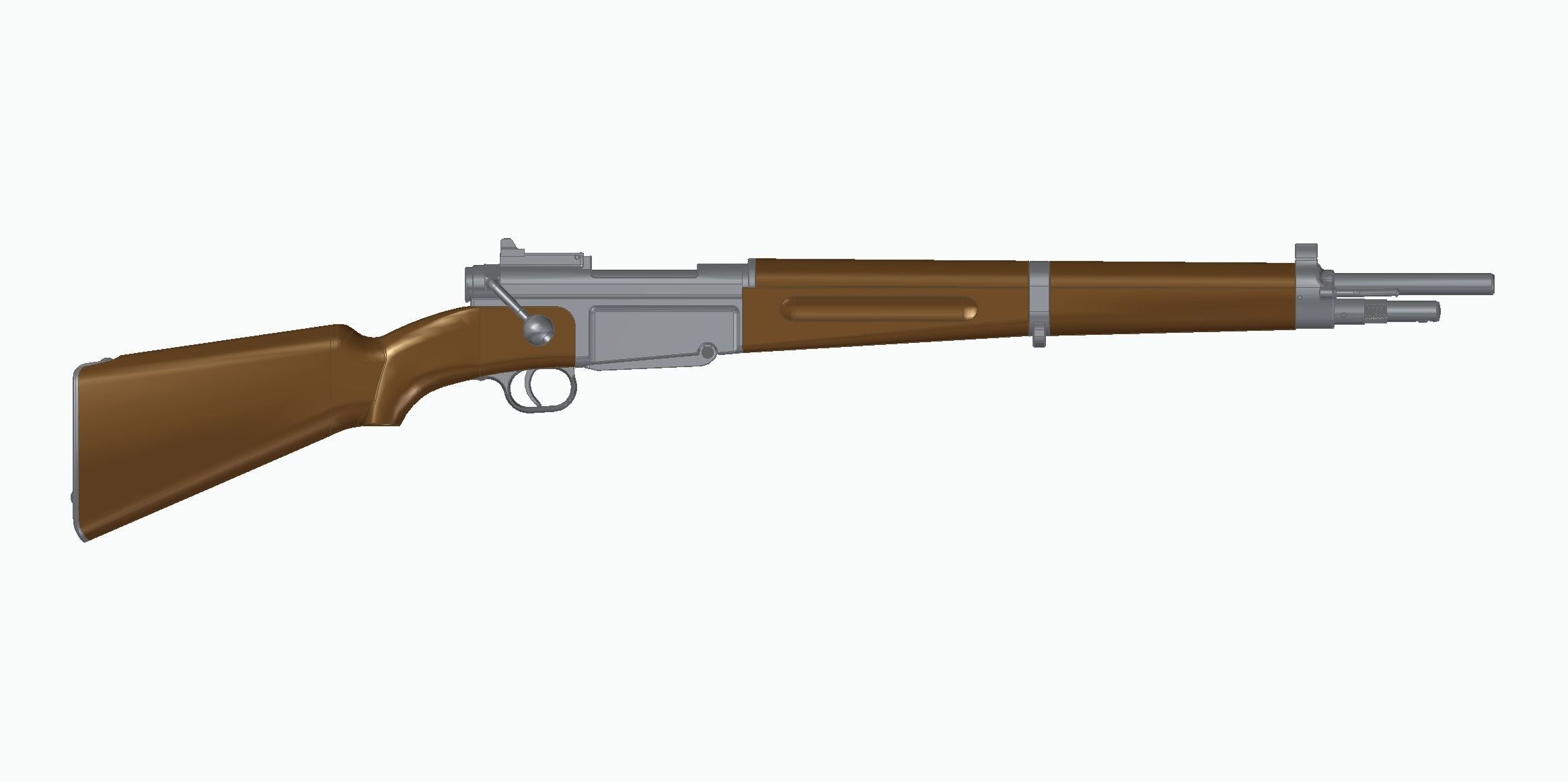
MAS-36 luftwaffe rifle 3D model
Full assembled model of French rifle and its 7,5x54 mm bullet and bayonet.
Model is good for weapon mechanic animation, games and for visual education.
Notification: if You need low poly model You can contact me here or : 27608166@mail.ru
The MAS Modèle 36 (also known as the Fusil à répétition 7 mm 5 M. 36) is a military bolt-action rifle. First adopted in 1936 by France and intended to replace the Berthier and Lebel series of service rifles, it saw service long past the World War II period. It was manufactured from late 1937 onward by Manufacture d'Armes de Saint-Étienne (MAS), one of several government-owned arms factories in France. Only 250,000 MAS-36 rifles were available to equip the French infantry during the Battle of France in 1940. Mass production finally caught up after World War II and MAS-36 rifles became widely used in service during the First Indochina War, the Algerian War and the Suez Crisis. Altogether, about 1.1 million MAS-36 rifles had been manufactured when production ceased in 1952
Tehnical dataThe MAS-36 is a short carbine-style rifle with a two-piece stock and slab-sided receiver. It is chambered for the modern rimless 7.5×54mm French cartridge; a shortened version of the 7.5×57mm MAS mod. 1924 cartridge that had been introduced in 1924 (then modified in 1929), for France's FM 24/29 light machine gun. The rifle was developed based on French experience in World War I and combines various features of other rifles like the two rear locking lugs of the British SMLE rifle (easy to clean and resistant to dirt), the dog leg shaped bolt handle of the British P14/U.S. M1917 Enfield rifle that places the bolt knob at a favorable ergonomic position in relation to the trigger and peep sight, and the five-round box magazine (claw extractor) of the German Gewehr 98 which stored 5 rounds in a staggered column and fed by 5-round stripper clips), to produce an ugly, roughly made, but immensely strong and reliable service rifle.There are just five user removable parts: a Lebel-type cruciform bayonet inserted into a guard tube under the barrel (taken out by the stopper and turned by snap-fastening the stopper in the tube to fix), the bolt body, the bolt rear cap, the firing pin and the spring of the firing pin. The metal parts of the rifle were black baked in an oven.The MAS-36 bolt handle was bent forward in an awkward fashion to bring it into a convenient position for the soldier's hand. Some have since been found bent backwards into a facing-downwards position like that of many other bolt-action rifles. The MAS-36 had a relatively short barrel and was fitted with large aperture (rear) and post (front) sights designed for typical combat ranges. Typical for French rifles of the period, the MAS-36 had no manual safety.The rifle was designed with an iron sight line consisting of a rear a tangent-type aperture sight element that was calibrated for 7.5×54mm French mle1929 C ammunition for 100–1,200 m (109–1,312 yd) in 100 metres (109 yd) increments. The original front sighting element was milled and consisted of a front post that was protected by two open 'ears'. There were 25 rear aperture elements available for the sight line to optimize it horizontally and laterally in 2.32 MOA increments during assembly at the arsenal. These arsenal mounted rear aperture elements shifted to point of aim 13.5 or 27 cm (5.3 or 10.6 in) left or right or up or down at a range of 200 metres (219 yd). It is worth noting that the front stock fittings are a major component of setting the sights on a MAS-36. To discourage disassembling the front stock non-standard screws with a spanner head were used on the barrel band and nose caps. Only armorers were issued with the appropriate screw drivers to remove the front stock. If removed the front stock will probably face quite a bit of trial and error in getting the screws set back to their exact positions again.It was normally carried with a loaded magazine and empty chamber until the soldier was engaged in combat, though the rifle's firing mechanism could be blocked by raising the bolt handle. The MAS-36 carried a 17-inch spike bayonet, reversed in a tube below the barrel. To use the bayonet, a spring plunger was pressed to release the bayonet. It was then free to be pulled out, turned around, and fitted back into its receptacle. The initial implementation of this bayonet design has a distinct (although, uncommonly[5] encountered) disadvantage: with a bayonet stored in one rifle and the other empty, the top of the stored bayonet could be locked into the empty bayonet tube of the second rifle. This obscures the release button on the bayonet and results in permanently (at least up to destructive disassembly) mated rifles. In post-war use the French updated the bayonet storage design by drilling a hole in the bayonet, which allowed the locking catch to be depressed through an already-drilled hole in the bayonet cap. Like the Lebel model 1886 rifle, the MAS-36 featured a stacking hook offset to the right side of the barrel for standing a number of the rifles (usually a trio) upright.

























